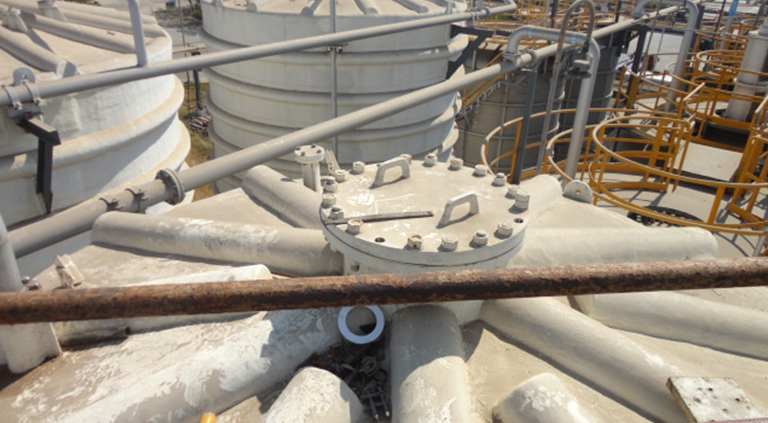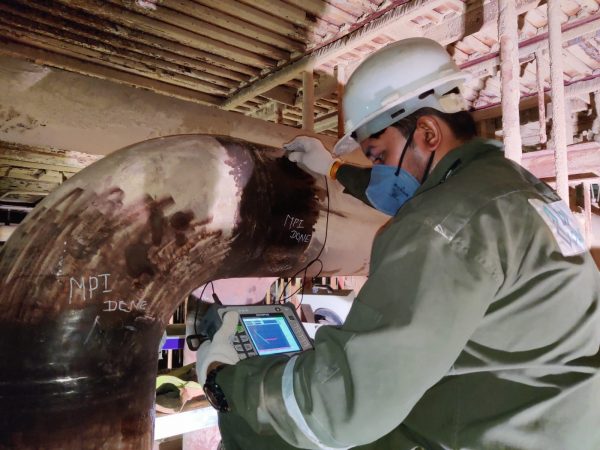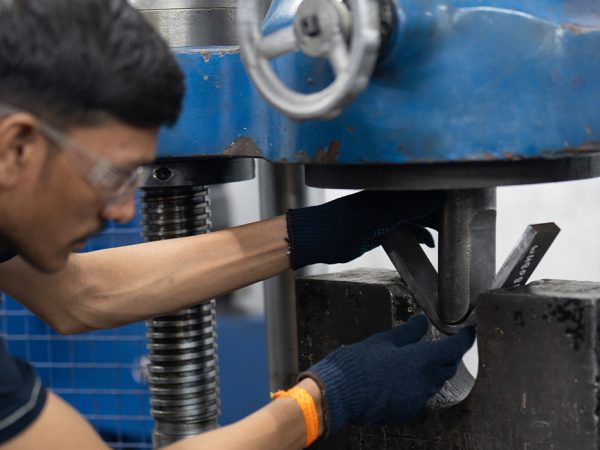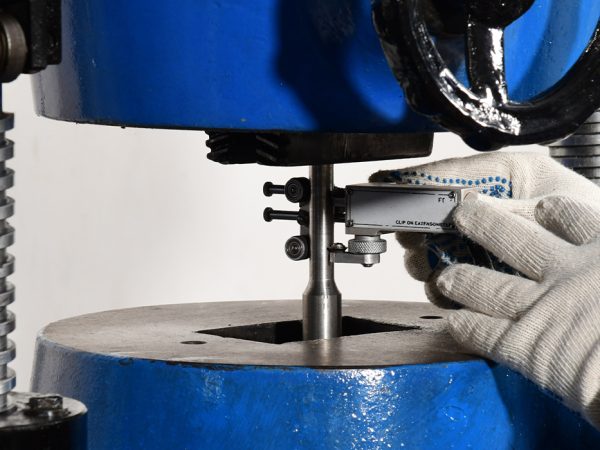Introduction
In heavy industries, reliability is everything. A single unexpected breakdown can lead to production losses worth millions, safety risks, and even legal consequences.
Remaining Life Assessment (RLA) is an engineering evaluation that estimates how much longer a component, equipment, or structure can operate safely, based on its current condition and usage history.
It’s more than just a maintenance tool—it’s a strategic decision-making process that combines technical expertise, advanced testing methods, and industry-specific knowledge to ensure assets perform optimally for as long as possible.
What is the Remaining Life Assessment?
Remaining Life Assessment – RLA is a systematic engineering process used to determine the Remaining Useful Life (RUL) of equipment or infrastructure.
The process involves:
– Inspection & Data Gathering – Detailed visual checks and operational history analysis.
– Material Testing – Using Non-Destructive Testing (NDT) for RLA to check structural integrity without damaging the asset.
– In-situ Metallography ( Replica test) and Hardness testing to ascertain the metallurgical condition of equipment.
– Performance Analysis – Evaluating wear, fatigue, corrosion, and operational stress.
– Calculations of minimum required thickness and Maximum Allowable working pressure (MAWP) and other design consideration
– Life Prediction – Using technical models to estimate safe operational time remaining.
In industries where downtime costs are high, RLA analysis helps prevent unexpected failures by enabling proactive repairs or replacements.
Why It Is Important to Do for Industries
Every piece of industrial equipment—whether it’s a boiler, turbine, pressure vessel, heat exchanger, storage tank, reactor, Vessel or any other critical Equipment—is constantly subjected to harsh working conditions. These include mechanical stress from continuous operation, corrosion due to exposure to moisture or chemicals, temperature fluctuations caused by heating and cooling cycles, and operational loads that push the equipment to its designed limits. Over months and years, these stresses gradually weaken the material, reduce efficiency, and threaten the structural integrity of the equipment.
If industries do not conduct Remaining Life Assessment – RLA at the right intervals, they face serious risks:
– Sudden and costly equipment failures: Without early detection and monitoring of wear and tear, a minor defect can grow into a catastrophic breakdown, requiring expensive emergency repairs or complete replacement.
– Safety hazards for employees and the public: A failed industrial component—especially in high-pressure or high-temperature systems—can cause accidents, injuries, or even fatalities.
– Loss of production and revenue: Unplanned shutdowns halt production lines, delay deliveries, and lead to financial losses.
– Non-compliance with safety regulations: Most industries are required by law to follow strict inspection and maintenance protocols. Ignoring RLA can result in legal penalties, shutdown orders, or loss of operating licenses.
By performing RLA regularly, industries can predict failures before they happen, plan maintenance proactively, and extend the safe operating life of their assets—ensuring both safety and profitability.
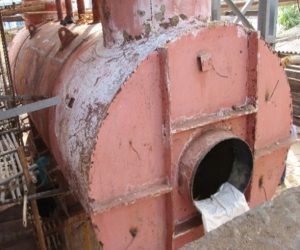 Benefits of Remaining Life Assessment
Benefits of Remaining Life Assessment
1. Improved Safety
Remaining Life Assessment helps in identifying wear, fatigue, or degradation in assets before they lead to failures. Detecting risks early prevents potential accidents and hazards. This proactive approach safeguards workers, equipment, and the environment. Ultimately, it ensures that operations run in a safe and controlled manner.
2. Cost Efficiency
By determining the exact Remaining Useful Life (RUL) of equipment, organizations can avoid unnecessary replacements. This approach reduces capital expenditure and maximizes asset value. Maintenance is performed only when required, lowering operational costs. Over time, it leads to significant savings and better resource utilization.
3. Regulatory Compliance
Many industries have strict safety regulations that require periodic asset evaluation. Remaining Life Assessment ensures that equipment meets these standards consistently. It helps avoid fines, penalties, and legal issues arising from non-compliance. Regular assessments also demonstrate commitment to responsible and sustainable operations.
4. Reduced Downtime
Emergency breakdowns often result in costly production losses. Remaining Life Assessment enables planned maintenance schedules, preventing sudden failures. With advanced insights, companies can prepare spares and manpower in advance. This leads to smooth operations with minimal interruptions.
5. Better Asset Management
The assessment provides accurate data on the health and performance of critical assets. This information supports informed decisions on repair, refurbishment, or replacement. Asset managers can prioritize resources based on actual need rather than assumptions. Such data-driven management improves long-term operational planning.
6. Operational Reliability
Well-maintained equipment is less likely to fail during critical operations. Remaining Life Assessment ensures machines work at peak efficiency for longer periods. It minimizes performance fluctuations and improves production consistency. As a result, overall plant reliability and output quality are enhanced.
What If an Industry Fails to Perform RLA?
Neglecting the Remaining Life Assessment – RLA can lead to:
1. Catastrophic Failures
Skipping the Remaining Life Assessment can cause critical equipment like boilers, pipelines, or pressure vessels to fail without warning. Such failures can trigger explosions, leaks, or
structural collapse. The damage may extend beyond the plant, affecting nearby areas. In extreme cases, it can result in injuries, fatalities, and long-term operational shutdowns.
2. Financial Losses
When equipment fails suddenly, operations halt, production targets are missed, and urgent repairs become necessary. This leads to massive expenses for replacement parts and emergency maintenance. Additionally, downtime can cost millions in lost revenue. Insurance premiums may also rise due to the increased risk profile.
3. Reputation Damage
An industrial accident caused by neglected assessments can attract negative media coverage and public backlash. Stakeholders may lose trust in the company’s commitment to safety. This damage to reputation can also lead to reduced business opportunities. In the long run, it becomes harder to attract skilled employees and clients.
4. Legal Consequences
Non-compliance with mandatory RLA requirements can result in regulatory actions. Authorities may impose heavy fines, revoke licenses, or even shut down operations. Legal battles can consume significant time and resources. In severe cases, responsible executives may face personal liability or criminal charges.
Industry-Wise Importance of Remaining Life Assessment
1. Power Generation Industry
In power plants, turbines, boilers, and pressure vessels operate under high temperature andpressure.
– RLA analysis ensures safe operations by detecting early signs of fatigue or creep.
– Non-Destructive Testing (NDT) for RLA helps assess material health without shutdowns.
– Avoids unplanned outages that can disrupt electricity supply to entire regions.
2. Fertilizer Industry
Fertilizer plants use high-pressure reactors and chemical processing units.
– Corrosion assessment in RLA is critical due to exposure to ammonia and acids.
– Remaining Life Assessment prevents chemical leaks that can harm workers and the environment.
– Extends equipment lifespan, reducing replacement costs.
3. Chemical and Petrochemical Industry
These industries handle flammable and toxic substances daily.
– RLA in petrochemical plants identifies wear in storage tanks, heat exchangers, and pipelines.
– Prevents hazardous leaks and explosions by tracking Remaining Useful Life (RUL).
– Enhances compliance with global safety norms.
4. Oil & Gas
Oil and gas facilities face extreme conditions—offshore platforms, high pressures, corrosive fluids.
– Pipeline remaining life assessment helps prevent catastrophic spills.
– NDT for RLA ensures minimal disruption during inspections.
– Extends drilling rig and refinery equipment life while ensuring safety.
5. Insurance Sector
Insurance companies rely on the Remaining Life Assessment – RLA to evaluate equipment risk before underwriting policies.
– Reduces claim risks by confirming safe operational life.
– Provides data to determine fair premium rates for industrial clients.
6. Pharmaceutical Industry
Pharma production involves precise temperature and pressure-controlled processes.
– RLA analysis ensures sterilizers, reactors, vessels and piping systems remain contamination-free and reliable.
– Prevents costly production stoppages due to equipment malfunction.
– Remaining Life Assessment (RLA) data helps plan maintenance without halting production.
– Corrosion assessment in RLA ensures paint shops and body manufacturing equipment stay in top condition.
FAQs
Q1: How often should RLA be performed?
A: Frequency depends on equipment type, operational load, and industry. Critical systems often undergo RLA analysis every 2–5 years.
Q2: Is Non-Destructive Testing (NDT) for RLA necessary?
A: Yes, NDT for RLA allows evaluation without dismantling or damaging components, saving time and cost and identify the deterioration in the equipment during operation.
Q3: Can RLA prevent all failures?
A: While it significantly reduces risks, external factors like misuse or sudden overload can still cause failures.
Q4: What’s the difference between RLA and a regular inspection?
A: Inspections check the current condition, while the Remaining Life Assessment – RLA predicts how long the asset can keep operating safely.
Q5: Is RLA applicable to small manufacturing units?
A: Absolutely. Even small plants benefit from RLA analysis to maximize asset value and ensure safety.
Q6. What is in-situ metallography?
In-situ metallography is a non-destructive technique used to examine the microstructure of metallic components directly at the site, without removing samples. It involves surface preparation, replication, and microscopic analysis—typically using portable microscopes
Q7. Why in-situ metallography is important in RLA testing?
Real-time condition assessment: Enables evaluation of service-induced degradation (e.g., creep, corrosion, graphitization) without dismantling equipment.
Minimally invasive: Preserves component integrity while providing critical data.
Cost-effective: Reduces downtime and avoids expensive destructive sampling.
Supports decision-making: Provides empirical evidence for repair, replacement, or continued operation.
Conclusion
TCR has developed unmatched expertise in assessing the current condition of boilers and determining their remaining life. TCR ensures that every evaluation is thorough, data-driven, and aligned with industry best practices. Their pragmatic approach focuses on gathering detailed equipment history and engaging with external experts who have in-depth operational knowledge. This foundation allows for precise diagnostics and actionable insights to optimize asset performance.
Furthermore, all gathered information is meticulously evaluated against testing results, with advanced studies conducted later using the most suitable methods. This systematic and comprehensive process enables accurate Remaining Life Assessment (RLA) analysis, helping industries plan maintenance, upgrades, or replacements with confidence. Through this blend of expertise, detailed investigation, and strategic testing, TCR empowers clients to enhance reliability, reduce downtime, and extend the operational life of critical boiler systems.
